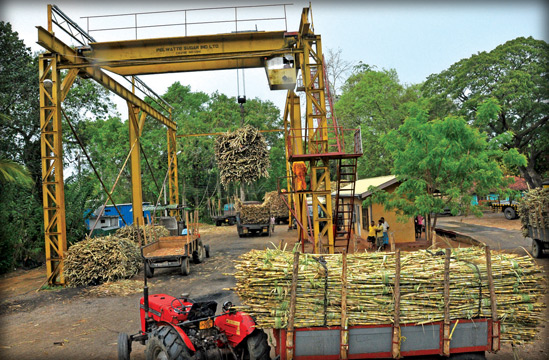|
Economics and Economists:
Wide gap between textbook economics and business management
By Lloyd F Yapa
Ronald Coase, a Nobel Laureate in economics, writing in the Harvard
Business Review, December, 2012 edition on 'Saving Economics from
Economists' says, "Economics as presented in textbooks and taught in the
classroom does not have much to do with business management and still
less on entrepreneurship".
|

Ronald Coase |
We, economists must examine whether this is true of Lanka as well. If
not, the future generations of students studying the subject might
ultimately realise that it helps neither them nor others especially,
entrepreneurs to understand why it is being taught and give up the
subject altogether.
The reason for this is that it has ceased to be a study of the
"nature and causes of the wealth of nations" as Adam Smith, perhaps the
originator of modern economics, introduced his work, 'The Wealth of
Nations', which according to Coase was read by businessmen and
politicians at the time, well no longer.
Paradigm shift
He says in the article, "the field (economics) experienced a paradigm
shift, gradually identifying itself as a theoretical approach, giving up
the real world economy as its subject matter". At present the subject is
not only theoretical but technical with mathematical calculations which
the ordinary person or the businessman will not understand. So they will
run to the politicians for solutions and not to the economists.
In fact, Coase says, "In times of crisis, when business leaders lose
their confidence, they often look to political power to fill the void".
Sri Lankan situation
How true, when considering the Sri Lankan situation? Lanka's
businesses usually demand import duty, tax and tariff protection from
the politicians and get it readily (the trade weighted tariff rate for
Sri Lanka was 124, versus 2 for Singapore, Global Competitiveness Index
12/13,) to serve the small domestic market; both parties do not seem to
know or ignore the fact that a small market cannot continue to drive
economic growth in the future, unlike exporting to global markets which
would allow large scale production, to realise economies of scale i.e.
for unit costs to come down and induce innovation.
The protection and other barriers like 'red tape' (Ease of Doing
Business Index 2013 ranks SL at 85 out of 188 countries) create an
export bias, (though duty and tax imposed on export inputs are exempted
or withdrawn by other means, which also involves some 'red tape'). So
much so that exports have started to decline (from a high of 33% of GDP
in 2004) to 17.7% and 16.6% of GDP in 2012 and 2013.
The signal from South East Asian nations such as Hong Kong,
Singapore, Taiwan and Malaysia however, is different. It is exports or
an emphasis on export promotion, (with a certain degree of protection
for domestic market-oriented industries as in the case of the last two
countries) can in fact speed up economic growth and alleviate poverty.
Have we economists, succeeded in highlighting the danger of a high
degree of tariff protection for domestic market-oriented activities
versus a reduction of tariffs to a reasonable level so that the
competition and rivalry among firms will compel them to invest more,
innovate and become export competitive?
Or is the failure due to the absence of understanding of the subject
by the politicians and policy makers? It could be both.
To make matters worse we are here engaged in a 'socialist' versus 'neoliberal'
theoretical argument without being practical like the Chinese and opt
for export growth to earn scarce foreign exchange.
"What does it matter whether the cat is black or white as long as it
catches mice?" ( Deng Xiaoping)
Production marginalised?
Coase also says, "today, production is marginalised in economics and
the paradigmatic question is rather a static one of resource
allocation". Capacity for production of goods and services in these
countries have been created by high levels of investments, particularly
of the foreign direct type (due to the confidence they had in the stable
business-friendly climate in the countries) which have increased
production capacities, while bringing in developed technologies,
management skills and market access.
This was accompanied by significant improvement in productivity (let
us define it as more output and returns from lower inputs and costs) due
to trading with the bigger external markets and investment and
development of key factors of production such as human resources to
create technical and behavioural or soft skills (like creativity to
undertake innovation, communication, ability to work in a team to
achieve targets).
Other factors of production liberalised and developed by them to
improve productivity included land, labour, capital, physical
infrastructure and value chains. In Sri Lanka, however, import
substitution and development of services have taken the place of
increasing production of goods, particularly value-added manufacture for
export, and the creation of skills.
Is this on account of the 'marginalisation of production' and as
Coase adds, due to "the reduction of economics to price theory" (body of
theory concerned with the determination of prices on the basis of supply
and demand) on the part of economists the world over and us in Lanka.
Personal judgments
Coase continues that "since economics offers little in the way of
practical insight, managers and entrepreneurs depend on their own
business acumen, personal judgments and rules of thumb in making
decisions".
 This might be correct as we economists in Lanka too might take it for
granted that as long as the State gets it correct e.g. where the
enabling business environment and policies are concerned for investment
and production, the firms will do the right thing in management and
profitability of earnings. This might be correct as we economists in Lanka too might take it for
granted that as long as the State gets it correct e.g. where the
enabling business environment and policies are concerned for investment
and production, the firms will do the right thing in management and
profitability of earnings.
But the problem is that Lanka had not been getting it right almost
from gaining independence, for short-term political gain and most of the
firms (least of all the State-owned enterprises) too have not fared well
in business management.
Thus for instance, according to the Global Competitiveness Index,
2014-15 Lanka's ranking in respect of Institutions is 75 (77),
Macroeconomic Environment - 114 (120), Higher Education and training
efficiency - 72 (62) Goods Market Efficiency - 39 (37), Labour Market
Efficiency - 135 (135) and Business Sophistication 39 (34), out of 148
countries (previous year within brackets).
One of the reasons for this could be that we economists may have in
addition avoided the study of micro economics (or 'the study of the
behaviour of consumers and firms along with price determination of
factor inputs - such as labour and land, 'goods and services'), besides
being unsuccessful at conveying the seriousness of the macroeconomic
situation (though it has somewhat improved in recent years).
Coase says, "The tools used by economists to analyse business firms
are too abstract and speculative to offer any guidance to entrepreneurs
and managers in their constant struggle to bring novel products to
consumers at low cost".
Competitiveness
The last few words, "bring novel products to consumers at low cost",
obviously refers to the ability to do so due to the improvement of
global competitiveness, which involves investment in production, a high
level of productivity and innovation for differentiation of operational
activities, (including motivation of workers) and goods and services
marketed, to satisfy the needs of customers.
Lanka's competitiveness at present does not seem to be good as
attested by the latest Global Competitiveness Index (GCI) of the World
Economic Forum. The rank of Lanka's competitiveness according to the GCI
in 2014/15 is 73 out of 148 countries (2011/12 rank 52 out of 142
countries), while it is 2 for Singapore, 7 for Hong Kong, 14 for Taiwan,
20 for Malaysia and 26 for South Korea. This is one of the reasons for
Lanka's poor performance where exports are concerned.
Rural agriculture
This neglect of micro economics by all parties could be true where
Lanka's rural agricultural enterprises are concerned as well, though the
sector (on which about 17 million people depend directly or indirectly)
has much potential, (since value added per worker in agriculture in Sri
Lanka had been only US $965 in 2010 compared to Malaysia's US $ 6680 in
2010 and Japan's US $43,000 in 2011).
This is apparent from a number of facts. More than 80% of the land is
State-owned and Governments have been parcelling out land at the rate of
about three acres per rural farmer under the Land Development Ordinance
(LDO).
The average extent of a holding has become too small (about 50% of
holdings being below 1/4 acre due to uncontrolled fragmentation) for
obtaining economies of scale and improving productivity. This is
subsistence farming and since the farmers do not own the land under this
system most are not inclined to invest in farming as a business.
Even if they wish to do so, they will not be able borrow any capital,
as banks usually do not accept the LDO permits as collateral for loans.
In the case of privately held land, the situation is no better as in
most instances, there is acute fragmentation of holdings. The titles of
the land they hold are not clear and the owners waste their energies on
interminable litigation.
Policy makers and economists like us have ignored the obvious
solution, that is to undertake land reform and grant of freehold
possession of State land to the LDO farmers and the clarification of the
titles of the privately held farming land to get a land market
functioning, while investing in expansion of manufacturing to absorb the
excess employment in agriculture (32% of total employment).
Systematic investigation
Perhaps we economists may not have highlighted these problems not
only because of a neglect of micro economics and diffusion of the
information among firms but also due to the fact "production is
marginalised" according to Coase.
It may also due to the fact that we tend to specialise in specific
and narrow areas of economics rather than looking at the whole as well,
(as Coase says " systematic investigation of the working of the
economy") and focusing on key result areas for formulation of
development strategies.
Coase rounds up by saying, "Economics thus becomes a convenient tool,
the State uses to manage the economy, rather than a tool the public
turns for enlightenment about how the economy operates".
This is, therefore, a signal for us economists to take a look at the
subject, answer the questions raised and indicate how it could be
studied and analysed and to determine how the resulting information
could be diffused for making the public and businesses aware of the
operation of our economy and of the firms so that they could use the
knowledge to pressurise politicians and policy makers to take the right
decisions regarding development.
|

